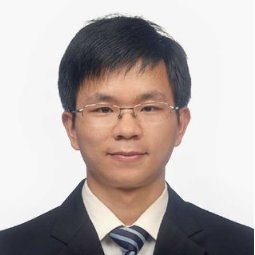Radiative Heat Transfer and Radiative Cooling
A special issue of Energies (ISSN 1996-1073). This special issue belongs to the section "J1: Heat and Mass Transfer".
Deadline for manuscript submissions: closed (25 July 2022) | Viewed by 9529
Special Issue Editors
Interests: electromagnetic flow and heat transfer; phase-change heat transfer; Lattice–Boltzmann simulation
Special Issues, Collections and Topics in MDPI journals
Special Issue Information
Dear Colleagues,
Thermal radiation has important applications in every aspect of our life. In recent years, improvements in the nano/microscale thermal radiation and radiative cooling technique have breathed new life to this field. Increasing attention has been focused on nano/microscale thermal radiation due to its potential application to thermal imaging, energy harvesting, nanomanufacturing, heat flow regulation, and local heating below the diffraction limit. Further, as a passive, effective, and renewable way of decreasing cooling energy requirements without power input, the radiative cooling technique has attracted considerable attention in the field of energy-saving applications.
This Special Issue is a dedicated outlet for up-to-date research on all aspects of radiative heat transfer. Theoretical papers, practical studies, and new methods are welcome, and we would particularly like to encourage papers on new theories and experimental setups of nano/microscale thermal radiation, and new materials and new applications for radiative cooling. Review papers that bring particularly helpful insights and capture up-to-date technological landscapes are also welcome.
Topics of particular interest include (but are not limited to):
- High-accuracy/efficiency/stability numerical methods in radiative heat transfer;
- Measurement of thermal radiative properties;
- Radiative heat transfer coupled with conduction and convection;
- Theory and numerical methods in near-field thermal radiation;
- Measurement of near-field thermal radiation;
- Thermal radiation from metamaterials, metasurfaces, and photonic crystals, surface polaritons;
- Application of nano–micro radiation;
- Solar energy harvesting and conversion;
- Thermophotovoltaics;
- Radiative properties of porous, disordered, and random structures, novel materials, and concepts for thermal radiation;
- Radiative cooling technology and application developments in radiative cooling;
- Photonic radiators and metamaterials;
- The advanced materials and structures of various radiators.
Prof. Dr. Kang Luo
Prof. Dr. Heping Tan
Guest Editors
Manuscript Submission Information
Manuscripts should be submitted online at www.mdpi.com by registering and logging in to this website. Once you are registered, click here to go to the submission form. Manuscripts can be submitted until the deadline. All submissions that pass pre-check are peer-reviewed. Accepted papers will be published continuously in the journal (as soon as accepted) and will be listed together on the special issue website. Research articles, review articles as well as short communications are invited. For planned papers, a title and short abstract (about 100 words) can be sent to the Editorial Office for announcement on this website.
Submitted manuscripts should not have been published previously, nor be under consideration for publication elsewhere (except conference proceedings papers). All manuscripts are thoroughly refereed through a single-blind peer-review process. A guide for authors and other relevant information for submission of manuscripts is available on the Instructions for Authors page. Energies is an international peer-reviewed open access semimonthly journal published by MDPI.
Please visit the Instructions for Authors page before submitting a manuscript. The Article Processing Charge (APC) for publication in this open access journal is 2600 CHF (Swiss Francs). Submitted papers should be well formatted and use good English. Authors may use MDPI's English editing service prior to publication or during author revisions.
Keywords
- Thermal radiation
- Coupled heat transfer
- Radiative cooling
- Near-field radiation
- Nano/microscale radiation
- Solar energy
- Radiative properties
- Thermophotovoltaics
- Photonic radiators






